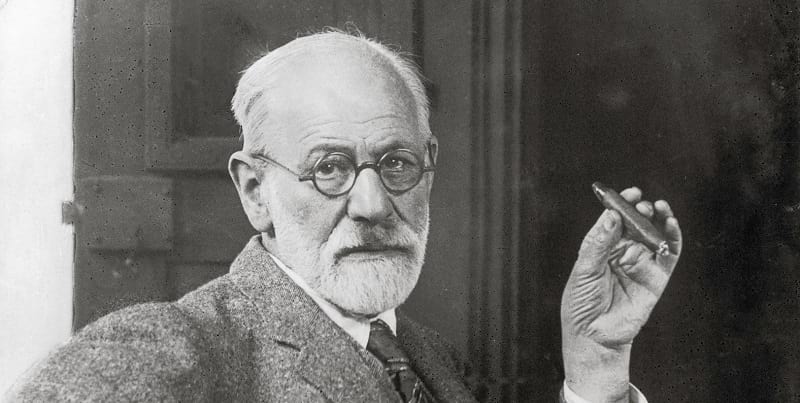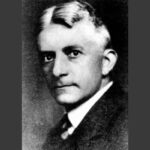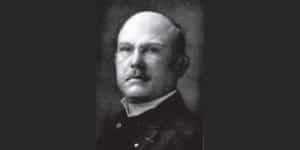Sigmund Freud biography, quotes and books

Sigmund Freud (May 6, 1856 – September 23, 1939), born Sigismund Schlomo Freud, was an Austrian neurologist and also the founder of contemporary psychoanalysis. Sigmund Freud is considered one of the most influential, popular and controversial minds of the 20th century. This article covers his biography, quotes and books. It also mentions some of his theories, including the Sigmund Freud Theory.
Who is Sigmund Freud? His biography
Early Years and Education
Sigmund Freud was born on May 6, 1856 in Freiberg, present-day Pribor, in the Czech Republic. When he was four years old, the family moved to Leipzig and then settled in Vienna, Austria. In Vienna, Freud already excelled in secondary education. He scored high marks in Greek, Latin, History, Mathematics and various science subjects.
His astonishing abilities allowed Freud early admission to the University of Vienna. He started studying medicine here. After graduating in 1881, he started working at the Vienna General Hospital.
As a student, he already focused on neurobiology, focusing on studying the biology of the brain and nervous tissue of both humans and animals. During this time, he often collaborated with Josef Breuer in treating hysteria. They did this by recalling painful experiences under hypnosis.
In 1885 Sigmund Freud traveled to Paris to develop as a student of neurologist Jean Charcot.
After graduation, Sigmund Freud set up a private practice and began treating various mental disorders. He saw himself first as a scientist, then as a doctor. He thus tried to understand the journey of human knowledge, experience and disposition.
In the year he started his own clinic, he married Martha Bernays. They had six children together. Sigmund’s youngest daughter, Anna Freud, also became an influential figure in psychology herself. Until her death she ardently defended and elaborated on her father’s theories.
The relationship of Sigmund Freud and his father
As the son of a merchant, Freud’s family life was unusual and somewhat complicated. His father, Jakob Freud, married Amalia Nathanson, Sigmund’s mother, at the age of 40. She was 20 years younger than her husband and even younger than her husband’s first son, Emanuel.
Father Jakob was not successful in business. This was also the reason that the family left and settled in Vienna. Just after their arrival in Vienna, the couple had five children in succession. This caused major financial problems. Freud’s father Jakob once told him a story about being abused by an Austrian Christian. He said the man took his hat and forced him to walk next to the sidewalk.
Sigmund Freud asked his father what his reaction was, to which his father replied that he had taken the hat and then walked on. He was very disappointed in this answer and found his father weak for it.
Sigmund’s brother, Josef, was arrested and ended up in prison for dealing counterfeit money. This worried father Jakob, as his other two sons, Emanuel and Philipp Freud, may have been involved in the case with him.
Jakob Freud tried to be a good father. His children were successful and he continued to be actively and supportively involved in the life of his children, as well as his grandchildren. When Sigmund turned 35, his father gave him a copy of the Philippson Bible. Freud wrote in the back of the bible: “as a sign of love from your old father.”
When father Jakob died later, Sigmund Freud wrote to a friend that his father’s death had hit him hard. He felt uprooted, he wrote. He himself described the death of a father figure as the most profound loss in the life of a grown man.
The relationship of Sigmund Freud and his mother
Sigmund’s relationship with his mother was not easy either. Amalia Freud is described as energetic, young and attractive. She was always very proud of her children and was also a major influence for Sigmund throughout his life.
Of the maternal figure in a family, Sigmund Freud later wrote: “A man who has been the indisputable favorite of his mother keeps for life the feeling of a conqueror, that confidence of success that often induces real success.” Around the year 1897, Sigmund began a self-analysis. During this analysis, he discovered deep memories of his childhood.
When he was between 2.5 and 4 years old, Sigmund Freud accidentally saw his mother naked. This event aroused a deep longing in Sigmund. He also remembered the feeling of jealousy he had felt when his brother Julius was born. Freud was so jealous that he welcomed the death of his youngest brother. These incidents certainly had an impact on the development of his theory about the Oedipus complex.
Freud’s further career
Shortly after Freud married Marta Bernays, Sigmund Freud started his closest friendship to date with the Berlin physician Wilhelm Fliess. His role in the development of psychoanalysis has sparked much debate.
During the 15-year friendship between the two, Fliess provided Freud with an invaluable discussion partner.
The most controversial and daring ideas were discussed by Freud with Wilhelm. For example, Sigmund Freud believed in human bisexuality, erotic zones on the body, and a link between sexuality and infants. These theories may have been stimulated and shaped by the two’s close friendship.
Freud started smoking cigarettes at the age of 24. He believed that smoking improved his ability to work and that he could exercise self-control by moderating his smoking habit. He later switched to cigars and eventually got oral cancer.
Sigmund Freud suggested that addictions, including smoking, were a substitute for masturbation. About masturbating Freud said: this is the only good habit.
Freud developed a great admiration for his philosophy teacher during his student days: Brentano. Brentano was known for his vision of perception and introspection. He discussed the possible existence of an unconscious mind in the brain in the article ‘Psychology from an Empirical Standpoint’.
Furthermore, Freud was influenced by the works of Charles Darwin and Eduard von Hartmanns. Freud also drew inspiration and confirmation from the works of Theodor Lipps, one of the foremost theorists of the concepts of the unconscious brain and empathy.
Initially, Freud was hesitant to compare and associate his own insights with other philosophical works. Nevertheless, comparisons can be made with his work and that of both Schopenhauer and Nietzsche.
Freud said in 1908 that he regularly studied the work of Nietzsche. He developed a fascination with Nietzsche’s work, but did not study him, because he felt Nietzsche’s ideas resembled his own too much. Freud’s interest in psychology waned when he decided to pursue a career in neurology.
Throughout his life, Freud read William Shakespeare. It is suggested that Freud’s understanding of psychology is derived in part from Shakespeare’s plays.
Sigmund Freud Last Years of Life
Sigmund Freud died in London on September 23, 1939. The last years of his life were a time of upheaval and struggle with his illness. Freud lived in Vienna for most of his life, but when the Nazis annexed Austria in 1938, this changed.
Freud was Jewish, but also the fact that he was the founder of psychoanalysis made him a target. Both Sigmund and his daughter Anna were interrogated by the Gestapo. Many of his books and works were burned.
Freud was forced by the Gestapo to sign a statement stating that he was not mistreated. Freud wrote, with a sense of sarcasm, that he would highly recommend the Gestapo to anyone.
A friend of the family then arranged for the family to leave for England. His four sisters Dolfi, Mitzi, Rosa and Pauli were unable to flee in time. They all died in a concentration camp.
They settled in a new house in London. Freud had been suffering from oral cancer since 1923 and by then had undergone about 30 oral surgeries. After the cancer returned, the doctors stated that a cure was no longer possible.
His dog, whom Freud loved dearly, howled at the smell of Freud’s jawbone. Freud had to wear a prosthesis to separate his nasal and oral cavities. This made it difficult for him to eat and talk.
On September 21, 1939, Sigmund asked the doctor to give him a lethal amount of morphine. Freud’s doctor gave him two centigrams of morphine, after which Freud fell into a peaceful sleep. After 12 hours, the doctor repeated this action and Freud fell into a coma. He died on the morning of September 23, 1939, after which his body was cremated.
On December 31, 2013, the crematorium where his ashes were kept was robbed. The old urn containing the ashes of both Freud and his wife was damaged.
Development of psychoanalysis
Freud only started developing psychoanalysis when he became a professor at the University of Vienna. He soon gained a group of followers. The whole was called the Psychoanalytic Society. Groups of this kind were also formed in other cities and countries.
Psychologists such as Alfred Adler and Carl Jung were early followers of Freud.
In 1905, Freud’s most controversial work was published: ‘Drei Abhandlungen zur Sexualtheorie’. He discussed in it that sexual urges play a big factor in determining a person’s psychology, even in babies.
In the same study, Freud also defined the Oedipus complex. This theory states that as babies, boys already have a certain sexual attraction to their mother. This makes them see their father as a competitor.
Another controversial theory of Freud is called ‘Femininity’. He called the theory penis glorification. He argued that women glorify penises as babies and develop a certain jealousy. This manifests itself in the desire for a mother to give birth to a son, as this is the closest thing to having a penis herself.
It is often noted that Sigmund Freud went to great lengths to assign as much sexual meaning as possible. Although unconfirmed, a person would have noticed that cigars were actually phallic symbols. Freud is said to have commented, “sometimes a cigar is just a cigar.”
During this period, he also developed the theory that would later be called the Sigmund Freud theory. In it he discussed the different elements of human consciousness: ego, the id and superego. Our article on Sigmund Freud Theory discusses this more in-depth.
Contributions to psychology
Although the works of Sigmund Freud are interpreted in different ways, there is no doubt that his works have had a huge impact in the field of psychology. Thanks in part to his studies, it became clear that not all mental illnesses have a physiological cause. He also recognized the influence of different cultural aspects on psychology and behavior.
Freud’s studies have proved very valuable for the contemporary understanding of personality, clinical psychology, development, and other forms of psychology.
Sigmund Freud Quotes
- “Being entirely honest with oneself is a good exercise.”
- “Anatomy is destiny.”
- “How bold one gets when one is sure of being loved.”
- “A woman should soften but not weaken a man.”
- “Out of your vulnerabilities will come your strength.”
- “The unconscious of one human being can react upon that of another without passing through the conscious.”
- “When one does not have what one wants, one must want what one has.”
- “We are never so defenseless against suffering as when we love.”
- “It is impossible to escape the impression that people commonly use false standards of measurement — that they seek power, success and wealth for themselves and admire them in others, and that they underestimate what is of true value in life.”
- “One day, in retrospect, the years of struggle will strike you as the most beautiful.”
- “Most people do not really want freedom, because freedom involves responsibility, and most people are frightened of responsibility.”
- “Unexpressed emotions will never die. They are buried alive and will come forth later in uglier ways.”
Books and Publications
- 1977. The meaning of illness: Selected psychoanalytic writings including his correspondence with Sigmund Freud. In The Meaning of Illness: Selected Psychoanalytic Writings Including his Correspondence with Sigmund Freud (pp. 1-266). London: The Hogarth Press and the Institute of Psycho-Analysis.
- 1964. The standard edition of the complete psychological works of Sigmund Freud.
- 1963. Psychoanalysis and faith: The letters of Sigmund Freud and Oskar Pfister.
- 1962. Psychoanalysis and religion.
- 1954. The origins of psychoanalysis: Letters to Wilhelm Fliess, drafts and notes: 1887-1902.
- 1925. The origin and development of psychoanalysis. In Sigmund Freud’s lectures at Clark University. 1910, Clark University, Worcester, MA, US; These five lectures were delivered by Freud at Clark University. The lectures were translated from the German by Harry W. Chase and revised by Freud.. Modern Library.
- 1920. A general introduction to psychoanalysis. Boni and Liveright.
- 1920. One of the difficulties of psychoanalysis. International Journal of Psychoanalysis, 1, 17-23.
- 1916. The history of the psychoanalytic movement. Psychoanalytic Review, 3(4), 406-454.
How to cite this article:
Janse, B. (2021). Sigmund Freud. Retrieved [insert date] from Toolshero: https://www.toolshero.com/toolsheroes/sigmund-freud/
Original publication date: 09/09/2021 | Last update: 12/06/2023
Add a link to this page on your website:
<a href=”:https://www.toolshero.com/toolsheroes/sigmund-freud/”>Toolshero: Sigmund Freud</a>











